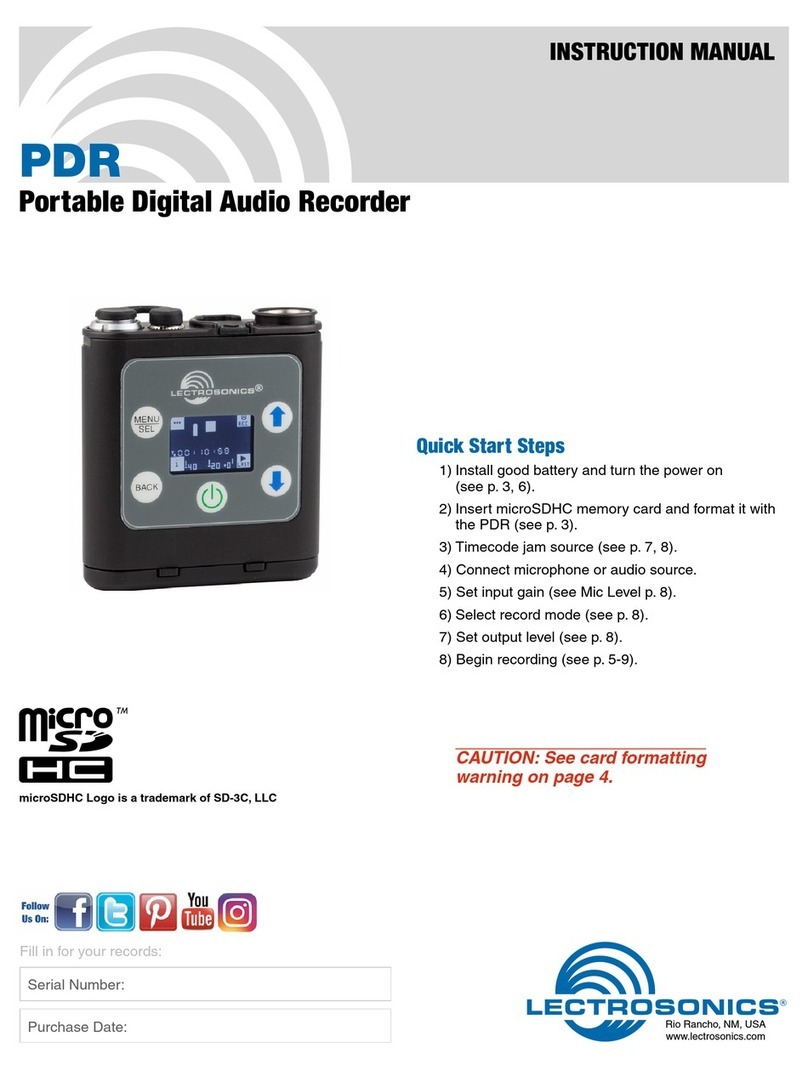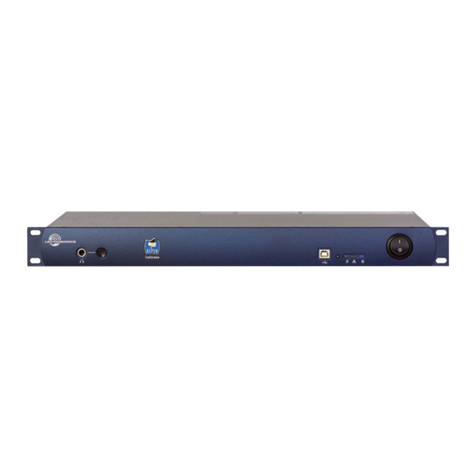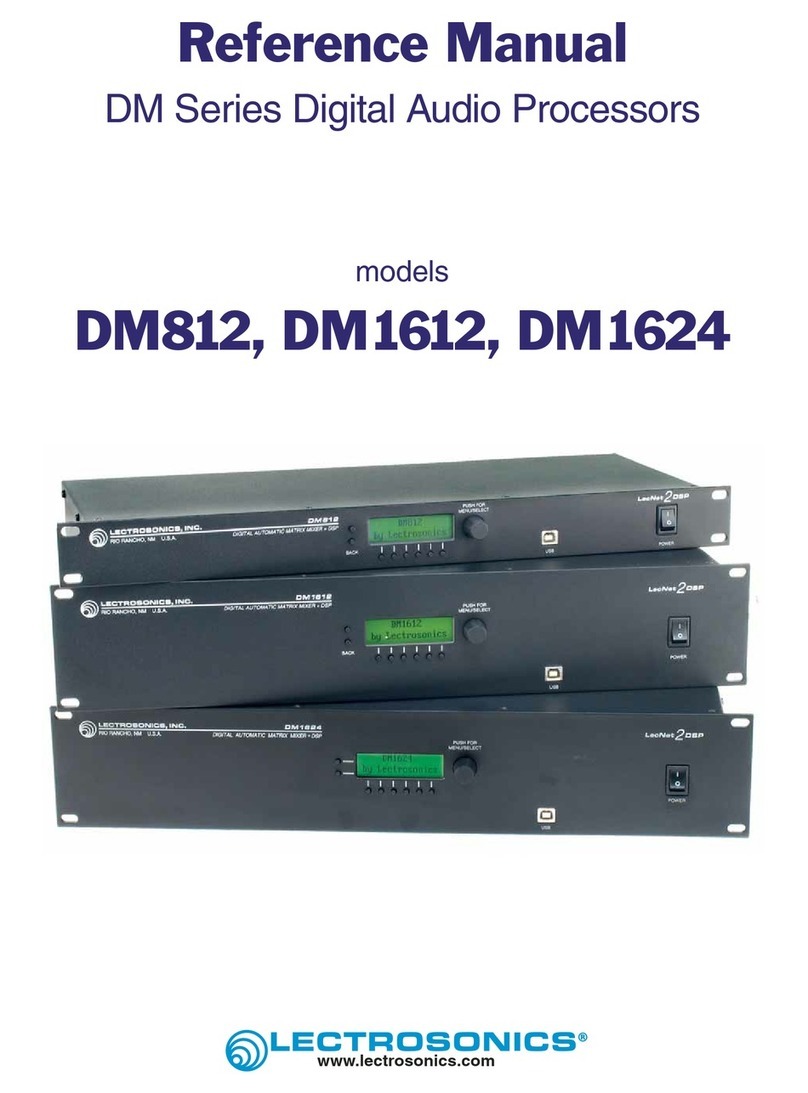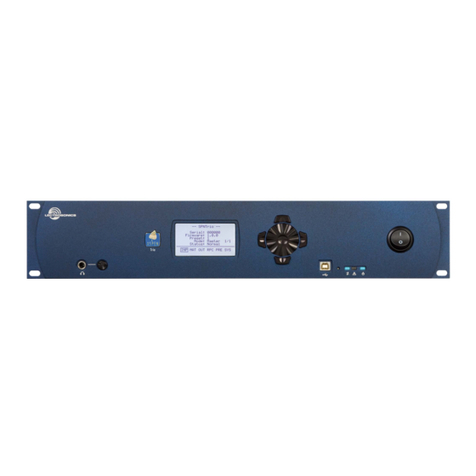
DM84 Digital Matrix Processor
LECTROSONICS, INC.6
DM84 Serial Interface and General Commands ................................................................................................................................44
Wildcards ............................................................................................................................................................................................44
DM84 General Commands ................................................................................................................................................................. 44
actpre (active preset) ......................................................................................................................................................................44
baud (baud rate) .............................................................................................................................................................................44
default (default settings) ..................................................................................................................................................................44
defpre (default preset) .....................................................................................................................................................................45
desc (description) ...........................................................................................................................................................................45
fpgnran (front panel control gain range)..........................................................................................................................................45
fplock (front panel control lock) .......................................................................................................................................................45
fpmten (front panel mute enable) ....................................................................................................................................................46
fppreadj (front panel control input preamp adjust) ..........................................................................................................................46
id (device id) ....................................................................................................................................................................................46
macro (macro command) ................................................................................................................................................................ 46
macroti (macro title) ........................................................................................................................................................................47
mode (Master/Slave mode) .............................................................................................................................................................47
predesc (preset description) ...........................................................................................................................................................47
premsk (default preset mask) .........................................................................................................................................................47
rank (rank in Lecnet2 chain) ...........................................................................................................................................................48
recall (recall preset) ........................................................................................................................................................................48
run (run a macro) ............................................................................................................................................................................48
serial (serial number) ......................................................................................................................................................................48
sleep (suspend macro execution) ...................................................................................................................................................48
store (store settings to preset) ........................................................................................................................................................48
version (firmware version) ...............................................................................................................................................................48
DM84 Audio Input Commands ............................................................................................................................................................49
inact (input activity) .........................................................................................................................................................................49
incl (input clipping) ..........................................................................................................................................................................49
indel (input delay) ............................................................................................................................................................................49
DM84 ADFE Commands ......................................................................................................................................................................50
adfeen (adfe enable) .......................................................................................................................................................................50
adfefil (adfe filter deployment) .........................................................................................................................................................50
ADFE Filter Numbers Mapped to Center Frequencies ...................................................................................................................50
DM84 Input Compressor Commands ................................................................................................................................................. 51
incpgn (input compressor gain) ......................................................................................................................................................51
incpmug (input compressor makeup gain) ......................................................................................................................................51
incprat (input compressor ratio) ......................................................................................................................................................51
incptc (input compressor time constant) .........................................................................................................................................51
incpthr (input compressor threshold level) ......................................................................................................................................51
DM84 Matrix Crosspoint Commands .................................................................................................................................................52
xpgn (crosspoint gain) ....................................................................................................................................................................52
xpgnst (matrix crosspoint gain step change) ..................................................................................................................................52
xpmode (crosspoint mix mode) ....................................................................................................................................................... 53
xpmt (crosspoint mute) ...................................................................................................................................................................53
xpmttog (crosspoint mute toggle)....................................................................................................................................................53
DM84 Audio Output Commands .........................................................................................................................................................54
outdel (output delay) .......................................................................................................................................................................54
outgn (output gain) .......................................................................................................................................................................... 54
outgnfp (output front panel gain) ..................................................................................................................................................... 54
outlb (output channel label) ............................................................................................................................................................55
outlv (output level) ...........................................................................................................................................................................55
outmic (output mic level) .................................................................................................................................................................55
outmt (output mute)......................................................................................................................................................................... 55
outmttog (output mute toggle) ......................................................................................................................................................... 55
outsrc (output signal source) ..........................................................................................................................................................56
DM84 Output Compressor Commands .............................................................................................................................................. 57
outcpgn (output compressor gain) ..................................................................................................................................................57
outcpmug (output compressor makeup gain) .................................................................................................................................57
outcprat (output compressor ratio) .................................................................................................................................................. 57
outcptc (output compressor time constant) ..................................................................................................................................... 57
outcpthr (output compressor threshold level) ..................................................................................................................................57
DM84 Output Limiter Commands .......................................................................................................................................................58
outlmgn (output limiter gain) ...........................................................................................................................................................58
outlmtc (output limiter time constant) .............................................................................................................................................. 58
outlmthr (output limiter threshold level) ...........................................................................................................................................58



































